Orthodox Easter – Russian Easter traditions
The Easter (Пасха [pás-kha] in Russian) is one of the most important Christian holidays, widely celebrated all over the world including in Russia. Russia follows the Orthodox branch of Christianity and therefore depends on the Gregorian calendar. This means the dates for Easter do not coincide with the Catholic or Protestant traditions. This year, Orthodox Easter falls on April 19th.
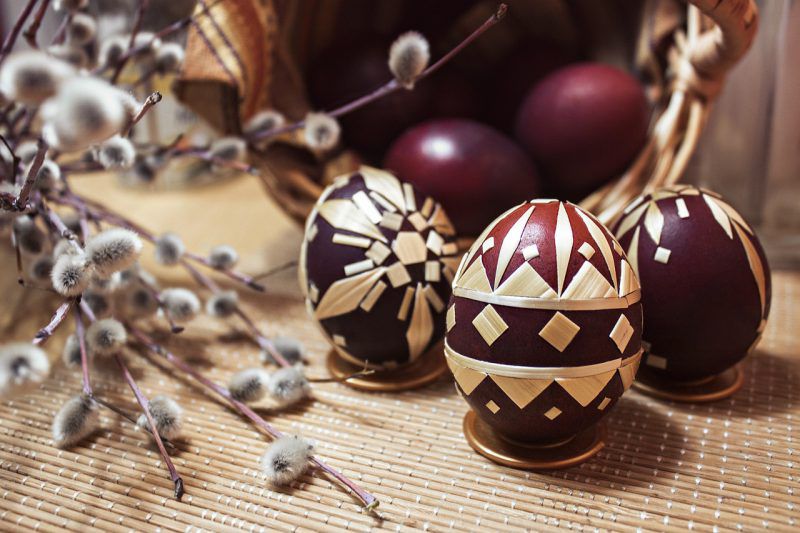
Easter is probably the most awaited religious holiday – after all, it symbolises the resurrection of Jesus after his death on the cross and the victory of life over death, therefore waiting for and celebrating the holiday is accompanied by many different rituals and customs which are described in this article.
Pre-Christian traditions of Russia
The Easter traditions in Russia are actually rooted in pagan times and beliefs. Before the adoption of Christianity, Russian ancestors celebrated the arrival of spring in late March or early April which was marked by various rituals.
For example, the men in the village used to make big bonfires trying to please and appease the Sun, and the most beautiful of the girls of the village, whose hair was decorated with the first flowers and herbs, walked around the village without clothes endowing the land with fertility and waking it up from a long, cold winter. The chanting and praising of spring and its arrival remained relevant until the adoption of Christianity by Prince Vladimir in 988.
Adoption of Christianity and Easter traditions
After the adoption of Christianity, Easter was one of the first celebrated religious holidays in Russia. During those first years after adoption the rites and customs that precede the Easter were formed.
The week before the Easter is called “Passionate”. During this week it is customary to remember and talk about the last days of the life of Christ. This week – the last week of the Great Lent – is marked by the most strict observance of fasting during which believers not only refuse food and fast only on water and bread, but also pray with special inner feeling and strength.
In the Orthodox tradition, each of the preceding days of Easter has a special meaning. Special attention is paid to the cleanliness of your home, your body and your thoughts. For example, the Thursday of the Passionate week is called “clean Thursday” – cleaning of the house should be done on that day. The following Friday is the day when the eggs are dyed and the Easter bread called “kulich” (кулич [ku-léech]) is baked. The house is usually decorated with willow branches.
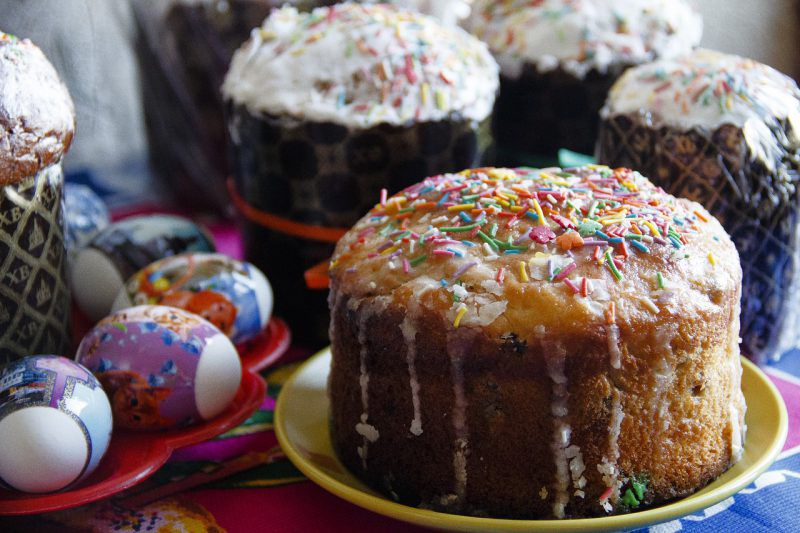
Symbols of Orthodox Easter
Kulich and eggs are not just delicious holiday treats but the main attributes of the Russian Easter. The legend has it that after death of Christ, his disciples put bread meant for him on the table during their meals. Today the kulich is a personification of that holy bread. In some regions of Russia, they also make a “cottage cheese Easter dessert” (творожная пасха) – a dish in the shape of a trapezium made from cottage cheese, sour cream, cream, raisins and candied fruits, which symbolises the Holy Sepulcher and is super delicious.
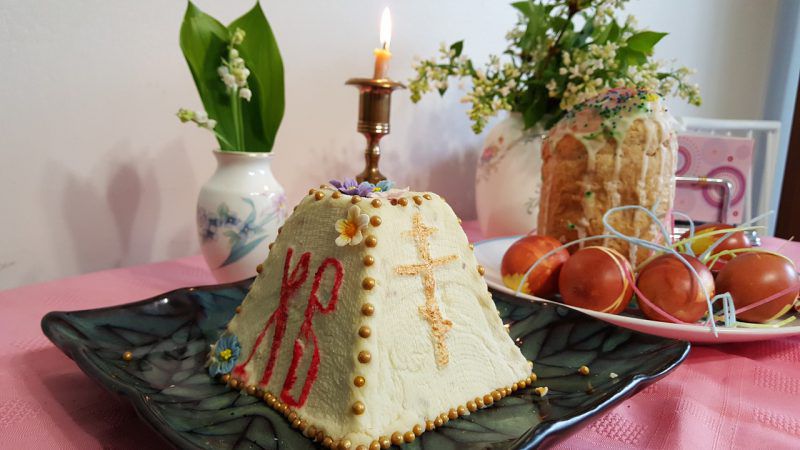
As for the dyed eggs, there is a legend that Mary Magdalene presented a red dyed egg to the emperor Tiberius announcing the resurrection of Christ. The egg is a symbol of the life of Christ whose soul was in the Holy Sepulcher. In the Russian tradition, red is a symbol of the sun, life and beauty, so it is not surprising that on the eve of Easter people paint eggs in onion peel which gives a beautiful red color. Of course, in the modern world there are many ways to decorate Easter eggs, but the traditional red coloring remains the most popular.
Willow twigs is another Easter symbol in Russia. Since ancient times, the willow has been known for its healing properties and served as a guard against the evil eye and damage. In addition, the willow blooms first among all trees and replaces the palm branch in Russia. Willow twigs are put in the most important place in the house. Hallowed twigs are customarily kept in the house until the next Easter.
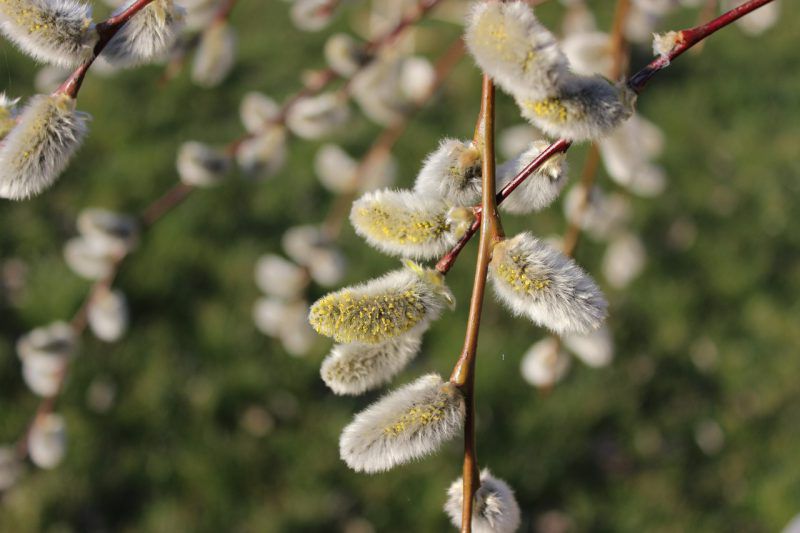
Orthodox Easter traditions today
In addition to the tradition of dyeing eggs, there is also the Easter eggs battle which looks like this: two people, each holding an egg in their hand, hit each other’s eggs. “The winner of the competition” is the one who broke the egg of the other. There is no unequivocal answer about the origin of this battle, however, most people are inclined to believe that the egg shell symbolized the Holy Sepulcher (Jesus’s body after death was placed in a cave that was covered with a boulder resembling an egg). Breaking the egg releases Jesus from non-existence.
On Saturday, the day before the beginning of the Orthodox Easter, believers usually go to church where they sanctify kulichi, eggs and willow twigs. In the evening, there is a holiday church service to which is customary to wear the clothes of light colors.
At midnight, the bells of all churches and cathedrals start beating, announcing the resurrection of Jesus to the whole world, and all believers who gathered at the church make a Religious procession around it three times. They congratulate each other with the words “Christ has risen!” – “Indeed he is risen!” («Христо́с воскре́с!» – «Вои́стину воскре́с!»).
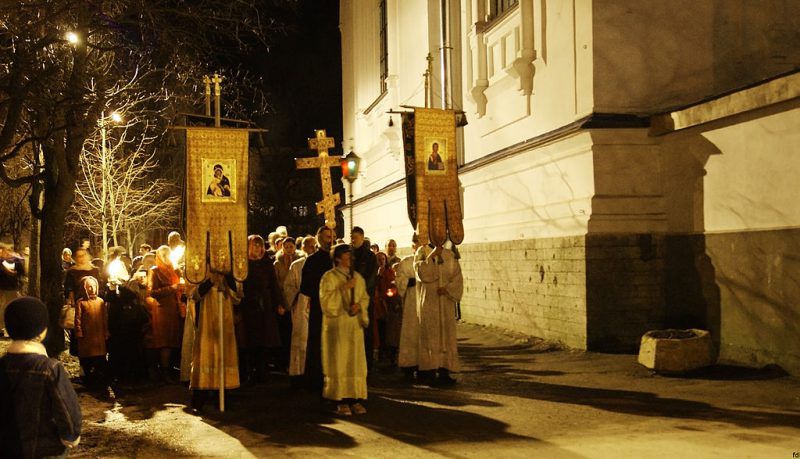
On the morning after the service, a festive table is served at people’s homes where the whole family gathers together and celebrates the resurrection of Christ with kulichi and eggs.
It must be said that Easter in Russia, like many religious holidays, has not been celebrated for a long time – the Soviet government did not recognize the role of religion in the life of society. Nowadays, however, everyone decides for himself whether or not to celebrate this holiday.
If you ever travel to Russia on the Easter week and have a chance to join the preparation and the celebration of the Orthodox Easter, don’t miss it – it is very interesting!

Culturologist, professor of Russian as a foreign language and promoter of Russian culture.
Aleksandra gives Russian lessons via Skype.






